STEVENSON
FAMILY of STEVENSON
IN THE MALAYSIAN ARMED FORCES
This time, I take a 'Stevenson Family' as the topic of my
discussion for its own (special) reason. This is related to the polemic
(lately) about the issues why non-Malays are not interested to join the Army.
The new Malaysian generation, MOST of them did not read the
history. They seek information from the current issues highlighted by the
politicians. They have only two choices, LIKE or DISLIKE. If they like the
ideology brought by the group of politicians, they will always say YES to
whatever they said up. And vice versa. The
young generations are aggressive but they do not like even not
interested to read the history.
Following the discussions, some are positive and negative.
Depend on what are the intention of the writers/speakers. Academically?
Politically? Socially? In fact, it
excites an emotional debate over new media (internet), especially bloggers.
There are some reasons (either through research or
assumptions) mentioned on the causes of the non-Malays refuse or are not
keen/interested in participating the Armed Forces (ATM). Basically there three
factors were raised:
they do not have the nature of patriotism;
they felt that a military career is not giving an
attractive return (in terms of RM); and
they do not like living with severe disciplinary censure.
By reading the blog/internet, those who opposed or do not
agree with the above statements stated that they did not interested in joining
the military because of discrimination by the Malays officers who dominated the
security forces (ATM and PDRM). They are discriminated especially in terms of
the opportunities of moving upwards in the career
These are the result when we exaggerated things that should
not be. In this country, if anything associated with race or religion will
become sensitive issues. MAF age is over three quarters of the century. Why
some people still want to say about percentage. If things are going well, let
it be. Unless if the declining percentage of Malay in the MAF had threatened national
security.
All we need is to be more rational. Our memory back to
HISTORY of MAF evolution and development .
Many of the writings and comments are quite outrageous and
racist prejudices. They might be think that equality in the MAF only realistic
if the appointments of senior officers to be distributed 50-50 for the Malays
and non-Malays officer. Treatment of military people are almost equal. Career
opportunities are also equal. Thousands of soldiers and policemen who stuck in
their promotion are Malays. Not because of they are not qualified or
discrimination BUT due to limited appointment in the establishment.
I started serving in the RMAF in 1981. At that time, almost
half of the officers in the RMAF are Chinese and Indian ethnic. Regardless of
their branch; pilots, air traffic
controllers, engineers and logisticians. Malay officers were mostly in Admin
Branch (beside Indian Officers).
When I was in TUDM Kluang for my basic flying training
(early 1981), the OC OCU Nuri was Mej Lim Aik Peng. The SATCO was Mej Quek SC.
My first unit (1981) is TUDM Kuching. The base Commander
was Lt Col Nagaratnam Ampalam. He then succeeded by Lt Col Khong Kah Sing. The
SEngO was Mej Tan Chee Seang (his predecessor was alsi a Chinese). The OC for
No 7 Sqn was Mej Thiagarajah and then replaced by Mej Wong Ah Ngan.
When I did my Basic Supply Course, my OC SEKLOG was Mej Ng
Poh Wah. When I get posted to TUDM Kuantan in 1983, almost 40% of the OCs in
Kuantan were non-Malays; namely Lt Kol Chan Poh Sam, Lt Kol Cheng Tiom Bow, Lt
Kol Rene Theivera, Lt Kol Anthony, Lt Kol Loke Kok Yee, Mej Quek Swee Chye etc.
When I was working in MPPU (Air Defence Command HQ) in
1989-1991, my Chief of Staff (Support) was Kol Danny Loh Chong Kwee, my SO1
Logistic was Lt Kol Rajaratman s/o Nadeson, the SO1 Control and Report was Lt
Kol Wong Chee Ming.
When I did my Squadron Officer Course in 1991, my DS were
Mej Chin Yoon Sem and Mej Koh Kia Lim (retired Brig Jen, Dato).
The percentage has declined from year to year because of
their retirement. Even in the Army, apart from Malay Regiment, almost half of
senior officers in the Ordnance Corps, Service Corps, EME Corps, Artilerry
Regiment, Cavalry Corps, Signal Regiments and off-course Medical and Dental Corps were non-Malays. And all the
Corps (at that time) were led by Colonel only.
Why? Apart from the Royal Malay Regiments, Rangers and MP
Corps the academic pre-requisites for technical savy Corps were strong in English, Mathematics and Science,
could not be fulfilled by the Malay candidates. Therefore, the Non-Malays dominated the entries - included
in the RMAF and RMN.
Majority of the army are Malays because of the Royal Malay
Regiment. Thus, it was not something that should be questioned if the majority
of the Generals are Malay. In such circumstances even then, there is still a
chance the non-Malays to reach the rank of Major General who led the Infantry
Division.
In fact, by percentage wise, the number of Colonel and
above in the Armed Forces is comparatively higher if we take the strength of
their community in the MAF.
The changes in TREND OF ENTRIES among the Non-Malays in the
MAF was in the middle of 80s. As a newly developing country, Malaysia entered
into new era of development. The socio-economic trend were also changed. From
agro-based and tin mining-based nation, Malaysia moved to industrial-based
country. Malaysians are become more profit-oriented employment. The Chinese and
the Indians slowly swallowed the business opportunities and professional
employment such doctors, lawyers, architects, engineers, accountants etc. The
Malays remained loyal to be the Government Servants. They feel secured and
comfortable working with permanent monthly wages.
That’s why profession like soldiers, policemen, teachers
and civil services were dominated by the Malays.
Therefore, the increasing number and percentage of Malays in the MAF is a common
phenomenon in the development or evolution of the socio-political-economy of a
country .
Similarly, in the Malaysian POLITIC scenario. In early 60s,
non-Malays were not keen to be active in politics. They focus their activities
were in the economic sector, trade and merchandise, manufacturing, mining and
plantation. The old generation who fully understood the SOCIAL CONTRACT prior
to the Independence respect the RIGHT of MALAYS (and BUMIPUTERA). But after
1969, 13 May Tragedy, they open their eyes and minds that POLITIC is equally
important with ECONOMY. Nowadays, they
are willing to risk their lives in politics. For sure, for only one purpose of
equally share the power (to rule) the country.
In any case of the STATEMENT of the reason for non-Malays
not keen to join the MAF due to UNPATRIOTIC is absolutely unacceptable.
I myself did not encourage my children to join the MAF, am
I not patriotic enough??
Lately, the issues of unpatriotisme are not limited to the
non-Malays. People did not respect the Jalur Gemilang (Nation’s Flag),
insulting the Kings or Leaders etc. Some of the Malay politicians especially
talking BAD about their own country. Gaining support for their
political-survival and unintentionally inviting outsider to get involve in
Malaysian internal affairs. They are not only UNPATRIOTIC but SELLING the
Nation.
Patriotic is also not limited to the spirit of depending
the country from external intrusion or threats. It will take a longer forum and
space to write about PATRIOTISM.
Now we come back to the topic, the story of 'Family of
Stevensons' in MAF. By ethnic, Stevenson family ia a Eurasian - sometimes we
call 'GRAGO or Pan ASIAN’. The word Eurasian refers to people of mixed Asian
and European ancestry. It was originally coined in nineteenth-century British
India to refer to Anglo-Indians (or Dutch-Indonesians or Filipino-Spanish) of mixed British and Indian (Dutch and Indonesians or Filipinos and Spaniards) descent. Since this
ethnic species is very limited in this country, so they married to either local
Chinese or Indian. So, eventually the their face look similar more to Chinese
or Indian

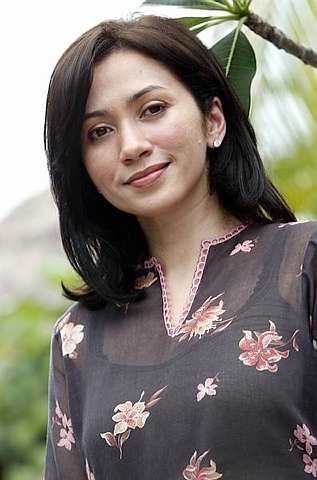
Popular Pan Asian faces
Coincidentally, on Feb 21, 2012 while waiting for my
appointment with Orthopedician at HAT Tuanku Mizan, I sat next to and was chatting with a retired senior Army officer who introduced himself as Richard.
Initially, I thought he is a Malay because his face like a Malay. He (and his
wife ) who also in the queue for the specialist. After sometimes then I know that he is a
retired Service Corps officer. He told me many stories of his experience
working as an Air Despatch Officer with the RMAF aircraft. All sorts of stories
specifically related to operations in the end of 60s and early70s. He also
remembered many RMAF pilots and claimed that the late Lt Gen Tan Sri Mohamad
Ngah Said was his batch (intake). Finally I got to know that his name was Lt
Col A. Richard Stevenson (B) and please follow this conversation:
Me: Sir, I know
somebody in the RMAF by the name of Stevenson.
He must be related to you.
Richard: Who?
Me: Michael Stevenson, Sir.
Richard: He is my son! (and his wife was also smile and
said "our son......")
Lt Col Richard Ananda Stevension
(he passed away on 13 Sep 2017, at 77)
Keturunan Stevenson menyertai ATM sejak pengambilan pertama
PEGAWAI KEDET atau perintis kepada 'Federation Military College' Port Dickson
tahun 1952. Seramai 12 pegawai kedet
yang dipilih sendiri (pemilihan akhir) oleh General Templer (Pesuruhjaya Tinggi
British pada masa itu). Salah seorang darinya ialah Victor Nelson
Stevenson. Dari jumlah 12 orang perintis
itu, hanya tiga Bumiputera. Mereka ialah:
(1) Pegawai Kedet Lai Chung Wah (bersara Mej Jen) - menerima Darjah Persekutuan (PJN) yang membawa gelaran Datuk setelah bersara - meninggal dunia pada 8 April 2017.
(2) Pegawai Kedet Victor Nelson Stevenson (bersara Brig Jen) - berhijrah dan meninggal dunia di United Kingdom pada tahun 2005.
(3) Pegawai Kedet Lakhbir Singh Gill (bersara Mejar)
(4) Pegawai Kedet Thong Chee Sin (bersara Lt Kol)
(5) Pegawai Kedet Ng Boon Hwa (bersara Lt Kol)
(6) Pegawai Kedet N Selvarajah (bersara Mej Jen Dato').
(7) Pegawai Kedet Gui Puh Chui (bersara Kol)
(8) Pegawai Kedet Leong Siew Meng (bersara Mej Jen Dato') - menerima Darjah DSNS dan meninggal dunia pada 06 Mei 1986.
(9) Pegawai Kedet Khong Kim Kong (bersara Lt Kol)
(10) Pegawai Kedet Asna Mohd Sultan (bersara Brig Jen Dato') - telah meninggal dunia
(11) Pegawai Kedet Abdullah Shamsudin (bersara Lt Jen Dato')
(12) Pegawai Kedet Amiruddin bin Mustapha Albakri (bersara Mej)

Templer's 12 SUPERBmen

Abdullah Shamsuddin
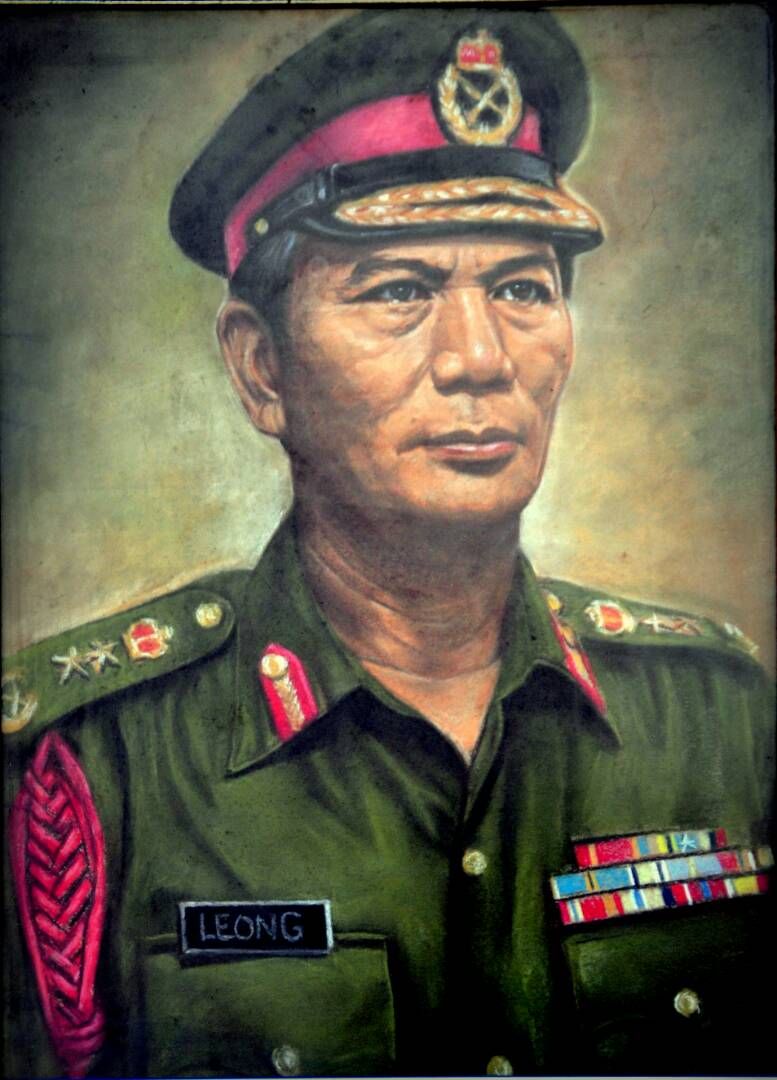
Leong Siew Meng

Lai Chung Wah

N. Selvarajah
(courtesy of www.malaysianindianhistory.blogspot.com)
HANYA ada 3 Melayu dalam KUMPULAN ITU. Itu pun, dari 3 Bumiputera
(Melayu) rasanya bukan semua 100% berdarah Melayu -termasuk Jawa, Banjar,
Bugis, Minang dan sebagainya). Asna dan Abdullah berdarah mamak (rasanya mamak Penang). Semasa aku bertugas di
Kuching 1981-83 Abdullah berpangkat Mej Jen dan menyandang jawatan Panglima 1 Div Infantri. Kalau dia pakai awam,
100% akan kata dia ni bukan Melayu), manakala Amirudin kelihatan seperti
berdarah Arab. Jadi Melayu (Bumiputera) tak usah terlalu bangga atau megah
kalau hanya menjadi pengasas penubuhan Kompeni Percubaan Askar Melayu 1933.
BAGAIMANAPUN, mengikut firasat aku, ketiadaan bangsa Melayu tulin dalam kumpulan ini bukan disebabkan Melayu tiada orang Melayu berjiwa patriotik. PUNCA utamanya ialah pendidikan. Pastinya syarat utama untuk menyertai latihan Pegawai Kadet ini ialah kelayakan akademik serta English proficiency. Pada masa itu, amat sukar mencari anak Melayu berpendidikan tinggi (bersekolah aliran English). Kalau ada pun anak-anak bangsawan yang bersekolah di MCKK yang dilatih untuk menjadi Pegawai Tadbir Awam (Civil Servants).
Kalau dikatakan kumpulan ELITE MELAYU kurang patriotik pun mungkin betul juga. Kenapa TIADA anak Melayu lulusan MCKK yang menyertai latihan Pegawai Kadet ini. MUNGKIN betul jika dikatakan anak Melayu dari kalangan berpendidikan tidak memiliki jiwa patriotik dan tidak berminat bersusah payah menjalani latihan ketenteraan.
TETAPI di peringkat askar-laskar, darah patriotik di kalangan anak Melayu memang tinggi kerana diberitakan ratusan anak Melayu yang mencuba nasib menyertai Kumpulan Pertama penubuhan Askar Melayu pada tahun 1933. Tetapi hanya 25 yang terpilih. Di kalangan mereka ini kemudiannya menjadi PEGAWAI dalam Rejimen Askar Melayu, terlibat secara langsung dalam peperangan melawan Jepun dan PKM serta ada yang mencapai ke pangkat Brig Jen (Brig Jen Abas bin Abd Manan).
BAGAIMANAPUN, mengikut firasat aku, ketiadaan bangsa Melayu tulin dalam kumpulan ini bukan disebabkan Melayu tiada orang Melayu berjiwa patriotik. PUNCA utamanya ialah pendidikan. Pastinya syarat utama untuk menyertai latihan Pegawai Kadet ini ialah kelayakan akademik serta English proficiency. Pada masa itu, amat sukar mencari anak Melayu berpendidikan tinggi (bersekolah aliran English). Kalau ada pun anak-anak bangsawan yang bersekolah di MCKK yang dilatih untuk menjadi Pegawai Tadbir Awam (Civil Servants).
Kalau dikatakan kumpulan ELITE MELAYU kurang patriotik pun mungkin betul juga. Kenapa TIADA anak Melayu lulusan MCKK yang menyertai latihan Pegawai Kadet ini. MUNGKIN betul jika dikatakan anak Melayu dari kalangan berpendidikan tidak memiliki jiwa patriotik dan tidak berminat bersusah payah menjalani latihan ketenteraan.
TETAPI di peringkat askar-laskar, darah patriotik di kalangan anak Melayu memang tinggi kerana diberitakan ratusan anak Melayu yang mencuba nasib menyertai Kumpulan Pertama penubuhan Askar Melayu pada tahun 1933. Tetapi hanya 25 yang terpilih. Di kalangan mereka ini kemudiannya menjadi PEGAWAI dalam Rejimen Askar Melayu, terlibat secara langsung dalam peperangan melawan Jepun dan PKM serta ada yang mencapai ke pangkat Brig Jen (Brig Jen Abas bin Abd Manan).
Selain dari nama V N Stevenson 'pioneer group' dalam ATM
sekarang terdapat banyak nama dari keluarga Stevenson. Antara nama 'Stevenson'
yang (sedang atau pernah) berkhidmat dalam ATM ialah Lt Kol Richard A.
Stevenson (B) (seorang pakar dalam bidang air despatch dalam Kor Perkhidmatan
Malaysia), Lt Jen Dato' Dr William Rangit Stevenson (RAJD)- orang kepercayaan
MENHAN untuk memimpin MiDAS (Malaysian Instritute of Defence and Security), Mej
Earl Macaine Stevenson (RRD), Lt Kol Michael Andy Stevenson TUDM - pegawai
Cawang Materiel TUDM (anak kepada Lt Kol Richard Stevenson) dan Mej Ryan
Mackeith Stevenson TUDM- seorang juruterbang pejuang TUDM. Dalam PDRM pun aku
jumpa nama C/Insp Alexander Timothy Stevenson!.
Tidak pasti sama ada ia adalah termasuk dalam salasilah Stevenson yang
ini atau mendiang V N Stevenson. Aku hatiku berkata YA.
Aku menerima teguran dari salah seorang pembaca blog Mr
Joshua Daniel (memperkenalkan diri sebagai cucu Brig Jen V N Stevenson) yang
menegur fakta tulisan saya (sila lihat komen beliau di bawah).
Namun kenyataan Joe Daniel telah disangkal oleh bapa
saudaranya 'Andrew Stevenson' yang mempertahankan kebenaran tulisanku
(initially just my assumption) melalui emel kepada aku bertarikh 2 Nov
2012. Kandungan emel tersebut ada aku
salinkan di dalam ruang komen di bawah.
Menurut emel yang aku terima dari Mr Andrew Stevenson, anak
saudara kepada mendiang Brig Gen V N Stevenson. Beliau yang menyatakan
kekagumannya di atas tulisanku turut memberikan maklumat terbaru berkaitan
keluarga Stevenson ini. Sangat menarik. Thank You so much Mr Andrew. Ini
bermakna Mr Joshua kena lebih usaha dan inisiatif untuk mengenali salasilah
kaum keluarganya yang berdarah PAHLAWAN.
Mengikut Mr Andrew, sejarah 'Family of Stevenson' dalam
dunia ketenteraan telah diterokai oleh Capt (Dr) Alexander Stevenson MBE yang
telah menyertai British Army. Nama
C/Insp Alex Timothy Stevenson yang aku 'agak' datang dari keluarga mereka juga
adalah benar. C/Insp Alex bertugas dalam Cawangan Khas PDRM. Ayah kepada Mr
Andrew (Mr Andrew tidak menyertai pasukan beruniform) adalah bekas pegawai
kanan PDRM iaitu SAC II (Bersara) Charlie C Stevenson!.
Mej Earl Macaine Stevenson dan Mej Ryan Mackeith Stevenson
adalah anak kepada Sgt George L. Stevenson (yang juga pesara TUDM- bekas AQM).
Menarik, sungguh menarik. Kalau aku ada masa bersembang dengan Lt Kol Michael
Andy Stevenson, pasti aku dapat banyak cerita lagi.

Lt Jen Datuk Dr William Ringit Stevenson
(Pegawai ATM bukan Melayu pertama menyandang pangkat Lt
Gen dalam ATM)
Lt Gen Datuk Dr William Ringit Stevenson
PJN PSAT DPTS DPSM PAT JSM PMP KAT KMN AMP PJM PPS PPA
Ph.D-Trg Mngt (UPM) MBA (HWU) Dip Mgt (MIM) AMIM psc
Lieutenant General Datuk Dr. William Stevenson is Chief Executive of the Malaysian Institute of Defence and Security (MiDAS). Prior to this appointment, he was the Inspector General of the Malaysian Armed Forces. He is also currently Chairman of The Track II Network of ASEAN Defence and Security Institutions (NADI) and member of the Council for Security Cooperation in the Asia Pacific (CSCAP).
During his service he has held various command positions in the Army and staff appointments at the Armed Forces Headquarters. He was also a trainer and has served as an instructor and directing staff at various training institutions such as the Institute of Military Engineering, Army Institute of Management, Army Combat Training Centre and the Army Senior Officers Institute. During his tenure in the field units, he was involved in counter insurgency operations at the Malaysia-Thailand border.
Apart from his military background, Lieutenant General Datuk Dr. William Stevenson earned a Master of Business Administration (MBA) degree from Heriot-Watt University, Edinburgh UK in 1995, and graduated with a Doctorate in Philosophy from University Putra Malaysia. He had also attended the Senior Executive Program in National and International Security at Harvard Kennedy School of Government, Boston, USA.
Datuk Dr William R. Stevenson became the first non-Malay officer in the Malaysian Armed Forces to be recently promoted to the rank of Mejar Jeneral (Major General) during a ceremony at MINDEF on February 20. Mej Jen Stevenson joined the Malaysian Army in 1974 and was commissioned into the Army Engineers unit. He had been involved in Malaysia’s counter insurgency operations against the notorious Malaya Communist Party (Parti Komunis Malaya- PKM) terrorist during the times of Insurgensi.
Prior to his promotion, he had been the executive director of Malaysian Institute of Defence and Secerity (MiDAS).
He retired from the MAF on 12 Dec 2015.
“I am the last of my coursemates to retire. The journey has been very long and exhaustive, but satisfying and rewarding for me, despite the early struggles one had to face.
“I am proud to have served my beloved nation the best I could, and encourage the younger generation of all races to come forward to seek a rewarding career in the Armed Forces,” said Stevenson, who turns 60 three days after Christmas (Dec 25).
He added that the many memories of his experience in service were recorded and put together in a simple pictorial book entitled “Pictorial Memories of Lt Gen Datuk Dr William Stevenson”.
“I have cherished every minute and moment in the Army ever since I was commissioned on March 15, 1975 by the current Yang di-Pertuan Agong (Tuanku Abdul Halim Mu'adzam Shah) who was serving his first term as the country’s king at that time,” said Stevenson.
A trained engineer, Stevenson is among the pioneer Armed Forces officers to have obtained a doctorate, which he did in management training from University Putra Malaysia in 1999, after graduating from Heriot-Watt University, Edinburgh in Scotland with a Masters in Business Administration in 1995.
His father was the late Capt (Rtd) Dr Abraham David Stevenson, while his mother was Betty Bang Neo.
Two of his brothers, the late Brig-Gen (Rtd) Victor Nelson Stevenson and Lt Col (Rtd) Richard A. Stevenson had served the Army, while another is retired Warrant Officer I George Stevenson who had served the air force.
Another two brothers who had served the police were the late retired Senior Assistant Commissioner Charlie Stevenson and retired deputy superintendent Alexander Stevenson.
Even Stevenson’s son Lt Aaron William Stevenson had served the navy before his untimely death in a road accident in 2004.
Stevenson, from Batu Berendam, completed his early education at the Anglo-Chinese School in Malacca.
Stevenson’s early Army days saw him being involved in counter insurgency operations against communist terrorists at the Malaysia-Thailand border.
His field operations involved booby trap clearance, bomb disposal, and camp construction works along the East-West highway.
He held various commands with the engineering squadrons, was an instructor and lecturer at the Armed Forces institutions and University Malaya, and became a speaker at many an international conference on defence and security.
In sports, Stevenson was the Armed Forces Squash Association chairman from 2006 to 2015.
Selanjutnya:
Pada 10 Nov 2012 aku sempat berbual-bual dengan Mej Michael
berkaitan dengan blog ini. Aku mendapat banyak maklumat tambahan mengenai
pertalian Keluarga Stevenson. Menurut Michael, mendiang Alexander (ayah kepada
mendiang Victor) mempunyai 3 orang isteri.
Isteri pertama mempunyai dua anak, isteri kedua mempunyai 3 orang anak
dan isteri ketiga mempunyai 13 anak.
Victor adalah dari isteri kedua.
Isteri Victor adalah berbangsa British. Setelah bersara mendiang
menghabiskan kehidupan bersama keluarganya di England.
Manakala kesemua anak-anak Alexander yang lain menetap dan
keluarga berkembang di Malaysia. 'No wonder' cucu mendiang Victor (Joshua)
tidak mengenali bapa-bapa saudaranya yang lain (berlainan ibu) yang
bermastautin di Malaysia.
Aku betul-betul 'SALUTE' dengan 'jati diri' dan sifat dan
semangat ketenteraan (pastinya patriotik) yang ada dalam keluarga 'Malaysian
Stevenson' ini. Aku tak terfikir mereka
ini masuk ATM dengan niat hanya untuk jadi Jeneral. Kalau bercita-cita untuk jadi Jeneral, itu
ada dalam hati setiap pegawai tentera.
Nyatanya, keluarga Stevenson ini mampu membuktikan 'kemampuan' mereka
sehingga ada yang mencapai ke tahap 3 bintang.
Keluarga Stevenson ini, aku anggap sebagai CONTOH terbaik
kumpulan etnik bukan Melayu yang bersemangat tegar -tidak mengindahkan
putar-belit politik dan polemik - terus berbakti kepada negara melalui ATM.
I read and rewrite this paragraphs from
'https://www.mindnoevil.blogspot.com owned by one of the retired Army General.
Most retired military officers today would have known the
late Brig Gen Victor Nelson Stevenson who joined the Army in 1952, and served
the nation with unquestionable loyalty for almost 32 years. He saw the Malayan
Emergency, Confrontation and the return of the Communist insurgency threat from
1969, until their eventual surrender in the late 80’s. To most who have known
and served him, Gen Stevenson portrays a fatherly figure and a gentleman, and
it is hard for anyone to dislike him.
Gen Stevenson is not alone serving the Army. He comes from
a family where the uniform service is a preferred vocation, and this preferred
vocation among the younger family members seems to continue till this day. I am
indeed honoured to have known Gen Stevenson, and to have served together with
his younger brother, Brig Gen Datuk Dr. William Stevenson at the Army Combat
Training Centre, Ulu Tiram, Johore in the 80’s.
Selanjutnya, cuba kita lihat senarai di bawah, iaitu warga
bukan Melayu yang mencapai pangkat '.....GENERAL' dalam ATM:
MALAYSIAN ARMY
(1) Lt Jen Dato' Dr.
William Rangit Stevenson (B) - Beliau adalah antara pegawai ATM yang
paling awal mendapat ijazah doktor falsafah (PhD) semasa masih dalam
perkhidmatan. William juga merupakan pegawai ATM bukan Melayu yang pertama
mencapai pangkat Lt Jen. Jawatan
terakhir beliau sebelum bersara pada tahun 2014 ialah Ketua Eksekutif MIDAS
(Malaysian Institute of Defence and Security) sejak institusi tersebut
ditubuhkan pada tahun 2010.
(2) Lt Jen Datuk Stephen Mundaw (B) - jawatan terakhir ialah Panglima Pemerintahan Medan
Timur TD
(1) Mej Jen Dato N. Selvarajah (B) - jawatan terakhir ialah Panglima 3 Divisyen Infantri.
(2) Mej Jen Dato Johan Hew
bin Abdullah (B) (nee: Hew Deng Onn) - jawatan terakhir ialah Panglima Divisyen Infantri.
(3) Mej Jen Datuk Lai Chung Wah (B) - jawatan terakhir ialah Komandan MPAT
(4) Mej Jen Dato' Leong Siew Meng (B) - bekas Ketua Pegawai
Semboyan dan jawatan terakhir ialah Komandan MPAT.
(5) Mej Jen Dato Dr Mohandas Ramachandran (B) - jawatan terakhir ialah Ketua
Pengarah Perkhidmatan Kesihatan ATM
(6) Mej Jen Dato Hj Mohd Affendy bin Abdullah (B) - jawatan terakhir ialah AKS
Logistik Pertahanan, MK ATM.
(7) Mej Jen Dato S.Jeyabalan
(B) - jawatan terakhir ialah Inspektor Jeneral TD
(9) Mej Jen Datuk Dr Chia Lip Meng (B) - Pakar Perubatan
(10) Mej Jen Datuk Ranjit Singh Ramday (B) - jawatan terakhir ialah Panglima Task
Force 450
(11) Mej Jen Toh Chin Siang - Panglima 1 Divisyen
(12) Mej Jen Dato' Mahendra a/l Sivapatha Sundram - KP Cwg Operasi BOLP.
(13) Mej Jen Anuar Tai bin Abdullah - AKS OPLAT, MK TD
(12) Mej Jen Dato' Mahendra a/l Sivapatha Sundram - KP Cwg Operasi BOLP.
(13) Mej Jen Anuar Tai bin Abdullah - AKS OPLAT, MK TD
(1) Brig Jen Victor Nelson Stevenson (B) - bekas Panglima
Briged AW
(2) Brig Jen Arulparagasam (B) - bekas Panglima Briged dan
bekas Komandan MTAT
(3) Brig Jen Dato Chong Thean Bok (B) - bekas Panglima Briged.
(4) Brig Jen Baljit Singh (B)
- bekas Panglima Briged.
(5) Brig Jen Dato M.A.A Rodrigo
(B) - bekas Panglima Briged.
(6) Brig Jen Dato Hon Mun Loong
(B) - bekas Panglima Briged.
(7) Brig Jen Rajban Singh Gill (B) - bekas Timbalan Panglima Divisyen.
(8) Brig Jen Philip Lee Puh Kui (B) - bekas Panglima Briged
(9) Brig Jen S. Mahendran (B)
- bekas Panglima Briged.
(10) Brig Jen Datuk Goh Ah Bah (B) - bekas Panglima Briged.
(11) Brig Jen Dato Dr Arichandra Nadarajah (B) - Pakar Perubatan
(12) Brig Jen Dato' Dr T. Thanachelvi a/p Thangarajah- Pakar
Perubatan
(13) Brig Jen Dato Dr Jegathesan Singaraveloo (B)- Pakar Perubatan
(14) Brig Jen Dato Dr Sivalingam a/l Sothilingam (B) - Pakar
Perubatan
(15) Brig Jen Dato' Ng Chin Huat (B) - CEO SMEO Sdn Bhd
(16) Brig Jen Dato' Muhammad Daniel bin Abdullah (nee: Damian
Christopher anak Dalang) - bekas Panglima 9 Briged.
(17) Brig Jen Dato' Thavachelvi a/p Thngarajan - Pakar Perubatan
(18) Brig Jen Suriakala a/p Suriabagavan - Pengarah Tenaga Kerja
(17) Brig Jen Dato' Thavachelvi a/p Thngarajan - Pakar Perubatan
(18) Brig Jen Suriakala a/p Suriabagavan - Pengarah Tenaga Kerja
(19) Brig Jen Dato' Wee Han Siew (Bersara)- bekas Komander
Briged Roket Artileri
(20) Brig Jen Ho Chin Chai - bekas Timbalan Ketua Jurutera
(20) Brig Jen Ho Chin Chai - bekas Timbalan Ketua Jurutera
(21) Brig Jen Johnny Lim Eng Seng - Panglima 31 Briged
(22) Brig Jen Loh Kooi Leong - bekas Panglima 1 Briged
(23) Brig Jen Dr Kwong Fook Wen - Inpektor Jeneral TD
(24) Brig Jen (Dr) Subhash a/l Govondasamy - Pakar Perubatan
SETAKAT 1 OKT 2019
(22) Brig Jen Loh Kooi Leong - bekas Panglima 1 Briged
(23) Brig Jen Dr Kwong Fook Wen - Inpektor Jeneral TD
(24) Brig Jen (Dr) Subhash a/l Govondasamy - Pakar Perubatan
SETAKAT 1 OKT 2019
ROYAL MALAYSIAN NAVY
(1) Laksdya Dato' Ganesh a/l Navaratnam - Ketua Peg Eksekutif MIDAS
(5) Laksdya Dato' Aris Adi Tan bin Abdullah (nee; Tan Chin Hau)
(1) Laksda Tan Sri Thanabalasingham (B) - PTL pertama.
(1) Laksda Tan Sri Thanabalasingham (B) - PTL pertama.
(2) Laksda Dato Danyal Balagopal bin Abdullah (B) (nee:
Balakrishnan a/l Gopal)
(3) Laksda Dato Gunaselan a/l Salamuthu (B)
(4) Laksda Dato Tan Eng Seng (B)
(5) Laksda Mohd Saiful Adli Chung bin Abdullah (nee: - ) - AKS Kejuruteraan MTL
(1) Komodor Parvithran Krishnan Nettur (B) - mendiang
(2) Komodor Malcolm William Alvisse (B)
(3) Laksma Lim Say Kiang (B).
(4) Laksma Albert Thong Yin Shin (B)
(5) Laksma Ramachandran a/l Visvanathan (B).
(6) Laksma T.Thiruchandran a/l Thambipillay (B).
(7) Laksma Foong Soo Hoi (B).
(8) Laksma Dato' Nicholas Eugene Peterson (B)
(9) Laksma K. Arasaratnam a/l Kasinater (B).
(10) Laksma Dato' Tan See Ming (B).
(11) Laksma Dato Wah Yuen Wei (B).
(12) Laksma Dato' Subramaniam a/l Raman (B)
(13) Laksma K. Soundarajan a/l Kaliappan (B)
(14) Laksma Dato' Chin Yoon Chin (B)
(15) Laksma Datuk Kay Hai Thuan (B)
(16) Laksma Datuk Ong Thiam Hock (B)
(17) Laksma Dato' Yeow Hui Siong
(18) Laksma Chan Peng Cheong
(19) Laksma Ir Aw Teck Bin
(20) Laksma Franklin Jeyasekhar Joseph
(20) Laksma Franklin Jeyasekhar Joseph
SETAKAT 1 MEI 2019
ROYAL MALAYSIAN AIR FORCE
(1) Mej Jen Dato' Gophal Ramdass TUDM (B)
(2) Mej Jen Dato' Ansar Ali a/l Majeth TUDM (B)
(3) Mej Jen Dato' Teoh Siang Chang TUDM (Bersara)
(4) Mej Jen Dato' Lim Tiow Yew TUDM (B)
(5) Mej Jen Dato' Muzammir Ong bin Abdullah TUDM (nee: Ong Ong)
(5) Mej Jen Dato' Muzammir Ong bin Abdullah TUDM (nee: Ong Ong)
(1) Brig Jen Dato' Huang Chew Siong TUDM (B)
(2) Brig Jen Datuk Richard Casimir Robless TUDM (B)
(3) Brig Jen Dato' Soon Lian Cheng TUDM (B).
(4) Brig Jen Dato' T. Parameswaran TUDM (B).
(5) Brig Jen Samsuri Welch bin Abdullah TUDM (B) -nee: Samuel
Ponniah Welch - allahyarham
(6) Brig Jen Datuk Toh Boon Fook TUDM (B) - mendiang
(7) Brig Jen Dato' Goh Seng Toh TUDM (B)
(8) Brig Jen Dato' Loke Kok Yee TUDM (B)
(9) Brig Jen Dato' Stephen Ngiau Tai Kong TUDM (B)- mendiang
(10) Brig Jen Dato' Ranjit Singh Gill a/l Gurmukh Singh TUDM
(B).
(11) Brig Jen Dato' Koh Kia Lim TUDM (B).
(12) Brig Jen Dato' Lau Kong Cheng TUDM (B)
(14) Brig Jen Dato' Johnny Loh Kok Hong TUDM (B)
(15) Brig Jen Dato' Lau Ing Hiong TUDM (B)
(16) Brig Jen Dato' Sun Thong a/l Ah Kue TUDM (B)
(17) Brig Jen Yee Yit Hong TUDM
(18) Brig Jen Tong Veng Leong TUDM
(19) Brig Jen Felix Gonsalvez a/l Alexander TUDM
(18) Brig Jen Tong Veng Leong TUDM
(19) Brig Jen Felix Gonsalvez a/l Alexander TUDM
SETAKAT 1 OKT 2019

Kalau nak mengambil ratio
dengan jumlah pegawai bukan Melayu dalam ATM, bilangan atau peratusan pegawai
bukan Melayu yang berpangkat satu bintang ke atas adalah tinggi

Mej Jen Dato' Ansar Ali a/l Majeth TUDM
Contohnya dalam TUDM, mereka (bukan Melayu) bukan sahaja berpeluang hingga ke pangkat Mejar Jeneral - tetapi juga memegang jawatan yang penting dalam strategik
negara seperti Ketua Staf Operasi Udara dan Panglima No 1 Divisyen Udara (Wilayah
Udara 1) dan Panglima Wilayah Udara 2.
Rujukan tambahan:
www.apanama.blogspot.com
www.cpiasia.com
www.wikipedia.com
www.thestar.com.my
www.nstpi.com.my
"CATATAN SEJARAH"
Templer’s 12 or Templer’s Superb Men
Templer selected a group of young Malayan men to be sent
first to Eaton Hall in Chester, and then selected 24 young Malayans to undergo
Officer Cadet Training at the Royal Military Academy at Sandhurst for later
appointment as officers of the multiracial Federation Regiment. The term 12
Superb Men was coined by the Malayan Press after the publicity associated with
the selection of the 13 men and their round Malaya exercise in an attempt to
recruit men for the Federation Regiment.The first 12 men were personally
approved by Templer. In the July 27, 1952, Sunday Times, Major General Sir Hugh Stockwell was quoted
describing the men as “completely satisfactory in every way”. The pioneering
officer cadets, nicknamed Templer’s 12 or Templer’s Superb Men.
From New Straits Times, Malaysia
12th March 2001
Get more Chinese to join Armed Forces and Police
By ABDULLAH AHMAD (Tan Sri)
IN A certain country, the loyalty of a particular race is
still very much in question in spite of the studies made which show that the
race has the highest level of loyalty relative to others, including the
majority race.
It seems the leadership of that nation is very concerned
with the increasing possibility of Malaysia being run by Pas which may
"talibanise" the nation, not an impossible prospect, really though I
doubt it will happen anytime soon. It is
a lame excuse for not taking a particular race fully into the Armed Forces of
that country, said a European diplomat at a dinner last Friday night. In
Malaysia, we are not prejudiced.
The majority of the Malaysian Chinese here proved beyond
doubt during the Emergency (1948-60) and the race riots in May 1969 that they
were good and loyal police and military officers and men. Millions of Chinese
have dispersed and are emigrating around the world as do the Jews, the Indians,
the Pakistanis and increasingly, the Arabs and the Filipinos. The Chinese in
Thailand and the Philippines have almost fully integrated with their adopted
homelands.Malaysian Chinese also have, to some extend, and perhaps, it is a
more successful story with the Indonesian Chinese. The Malaysian Chinese form
between 30 and 35 per cent of our 22 million plus population, and I believe
they are not a homogeneous group whose great wealth (and talent) pose a threat.
My old history teachers at Malay College Kuala Kangsar and
the professors at Cambridge and Harvard always cautioned me: before you study
the history, (the nation), study the historian (the leader), his historical and
social background. I have much benefited from the advice. For our continuing
understanding of our neighbours and also that of our second largest fellow
compatriots and of their times, we should have an open mind. People are
generally the product of their historical, social and economic environment. Like
the history of the majority race (actually marginally only), everything is
about power and ideology, all contributing to the story of the impact each has
on the nation.
A Chinese girlfriend yesterday drew my attention to the
general reluctance of the Malaysian Chinese - young men and women - to become
police officers, soldiers and even teachers. It was reported, she told me, that
the government teachers training colleges could not get enough candidates for
their Chinese teaching courses while I believe the number of Chinese law
officers and soldiers is far too small.
I can hardly see Chinese cops on the beat. I do see occasionally Indian
'mata-mata'. I would like to see their number increase drastically. Of course,
it is easier said than done. I have been told that the Armed Forces, the
Police, and indeed the Civil Service, are having some difficulties in
attracting bright Bumiputera youths to join them.
The good Bumiputera women and men, especially those
educated overseas, prefer to join the private sector, become self-employed or
start their own businesses. Before independence and the years following it,
there were many Chinese and Indian officers in the Police and the Armed Forces.
In fact grossly out of proportion of the number of Chinese and Indian enlisted
men which was and is Bumiputera majority. In 1952, General Gerald Templer
(later Field Marshal and Tun), the Supremo of Malaya, created the Federation
Regiment which was opened to recruits of all races.
The Royal Malay Regiment remained and remains exclusively
Malays. By all accounts, it was a success. Eleven young Malaysians (then
Malayans) _ only three Malays, one Sikh, one Eurasian and six Chinese _ were
recruited as potential officers. One was a senior to me at the Malay College Kuala
Kangsar, Amiruddin Mustapha Albakri, who left the army as a major, but Abdullah
Shamsuddin, Lai Chung Wah, Asna Mohamed Sutan and Leong Siew Meng all rose to
become generals. I knew two or three personally and worked with them when I was
the political secretary to Tun Razak, who was, besides being Deputy Prime
Minister, was also a long time and excellent Defence Minister we ever had. When
Major General Leong retired, I invited him to sit on the board of Gadek when I
was chairman. I kept him on until he died.
To his credit and because he was a political realist,
Templer (even with power of a dictator) also expanded the Royal Malay Regiment,
created a military training college and boys' wing which I once aspired to join
but made no serious attempt to do so. The boys' wing which later became the
Royal Military College was to attract a potential officer material early on. He
also established the inter-racial Federal Armoured Car Regiment.
I must commend Sin Chew Jit Poh - whose early editor, the
late Chan Ken Sin, was detained together with me in 1976 - which last week
began a series of stories urging more Chinese to become police officers. It
pointed out that out of a force of about 83,000-strong force (of various
ranks), only 10 per cent are Chinese. I like the Chinese to join the police
force - especially in the traffic and
crime branches, and, of course, the all important crime branch, and indeed in
all areas of police activities. The Malaysian Chinese should also enlist in the
Armed Forces.
At least in Malaysia, I can personally state we are not
going to probe into what probable respond of the Malaysian Chinese soldiers or
policemen would be in case we go to war with a neighbouring nation, captured by
a rabidly anti-Muslim-Malay leadership. We trust our people, irrespective of
their religious and racial background, to do the right thing. Malaysia is their
home, and they will fight its enemies whoever they may be.
There was a time - a long time ago though - when
competition to join the Armed Forces and even the Police Force, was very keen
because the uniforms provided an acute attraction. Except for the Royal Malay
Regiment, all units of the Armed Forces and the Police Force are open to all
races, and I do appeal to the other Malaysians in order to achieve racial
integration and to get everyone believing and committing himself/herself that
we all have a stake here. - Business Times.

Herewith are another testimonial about the
bravery cases of non-Malay soldiers and police. Most of the recipients of
'Gallantary and Bravery Awards' in the early years of their introduction were
non-Melayu: They were fighting the nation foes namely Communist Terrorists and
also served under UN Mission in early 60s/70s.
Among them are:
(1) Sgt Chong Yong Chin PGB
(2) Lt Lee Ah Pow PGB
(3) Lt David Fu Chee Meng PGB
(4) Sgt Choo Woh Soon PGB
(5) Capt Shanmuganathan PGB
(6) Rgr Mat Isa Hassan PGB (Chinese)
(7) Capt Mohana Chandran SP
(8) 2nd Lt N.H Siebel PGB
(9) Capt Maurice Lam
(10) 2nd Lt Panir Chelvam a/l Velliah PGB
(11) Capt Mukhtiar Singh a/l Sodagar Singh PGB
Melalui pengalaman yang diceritakan oleh pelbagai sumber yang dipercayai, pengorbanan pegawai dan anggota ATM dan PDRM (terutamanya yang) berbangsa China (yang kebanyakannya bertugas dalam Cawangan Risik ATM atau pun Cawangan Khas PDRM) amat tinggi dan dihargai dalam usaha untuk menangkap KEPALA-KEPALA UTAMA pasukkan Pengganas PKM yang licik-licik seperti Chong Chor, Ah Lek dan lain-lain.
Mereka ini (hero) dikhabarkan menyamar diri
sebagai pekebun di kawasan pendalaman di pinggir-pinggir hutan bertahun-tahun
untuk mendapatkan maklumat 'first hand' mengenai setiap pergerakan kepala
pengganas ini. Malah dikatakan ada yang hidup bersama-sama pengganas komunis di
kem-kem pengganas di dalam hutan, ibarat nyawa di hujung tanduk.
Adakah patriotik mereka masih tidak mencukupi?

LAKSAMANA PERTAMA CHAN PENG CHEONG adalah model terbaik RAKYAT MALAYSIA bukan Melayu kelahiran Alor Setar yang mengekalkan sifat patriotik yang tertinggi. Bukan sahaja beliau (Chan) berjaya mencapai pangkat satu bintang (setakat ini), darah pahlawan yang mengalir dalam dirinya kini dijejaki oleh tiga orang puteranya.
Kesemua TIGA anak lelakinya menerima biasiswa ATM bagi melanjutkan pengajian di dalam dan luar negara. Anak sulung, Leftenan Chan Jun Shen, graduan UPNM kini merupakan Pegawai Jurutera Udara di Markas Udara TLDM. Anak keduanya , Lt Muda Chan Jun Win pula adalah graduan perubatan dari Universiti di Rusia, kini adalah pegawai perubatan ATM.
Manakala anak bongsunya Lt Madya Chan Jun Kwan yang pernah menerima
hadiah Komandan MTD 2011 pula adalah graduab The United States Naval
Academy (USNA) di Annapolis, Amerika Syarikat.
THE EMERGENCE OF DYNASTY CHAN

LAKSAMANA PERTAMA CHAN PENG CHEONG adalah model terbaik RAKYAT MALAYSIA bukan Melayu kelahiran Alor Setar yang mengekalkan sifat patriotik yang tertinggi. Bukan sahaja beliau (Chan) berjaya mencapai pangkat satu bintang (setakat ini), darah pahlawan yang mengalir dalam dirinya kini dijejaki oleh tiga orang puteranya.
Kesemua TIGA anak lelakinya menerima biasiswa ATM bagi melanjutkan pengajian di dalam dan luar negara. Anak sulung, Leftenan Chan Jun Shen, graduan UPNM kini merupakan Pegawai Jurutera Udara di Markas Udara TLDM. Anak keduanya , Lt Muda Chan Jun Win pula adalah graduan perubatan dari Universiti di Rusia, kini adalah pegawai perubatan ATM.

Mej Ryan 'Rhino' Mackeith Stevenson adalah salah seorang waris keturunan keluarga Stevenson yang saya ceritakan dalam blog ini.

Many non-Malays feel not welcome in the military
.
Old soldiers fondly remember a lost multi-racial military
By Soo Wern Jun - August 31, 2018
KUALA LUMPUR: Most countries with ethnically mixed
populations now welcome increased racial diversity in their modern armed
forces.
The common aim is to give their nations the best possible
security.
They’re keen to attract their most able citizens, regardless
of race or religion, in this increasingly specialised, hi-tech age.
So why is Malaysia going in the opposite direction?
Until the 70s, around 30% of the total Malaysian armed
forces (ATM) manpower was non-Malay. The Navy and Air Force had an even higher
percentage.
Currently the non-Bumiputera ATM total has plummeted to
around 5%.
Some might say Malaysia is squandering its most valuable
resource: the unique racial mix. And as a result, the nation has a less
effective defence force.
One argument is that the fault lies with the authorities,
who are making things difficult for Chinese and Indian citizens to join the
military and rise through the ranks.
Or is it simply that non-Bumiputeras are turning their
noses up at serving their country in favour of more lucrative careers?
It’s hard for non-Bumis not to see the current military as
being run by and for Malays with an “orang kita” attitude to recruiting and
promotion. They feel there is no welcoming place for people like them nowadays
in the military.
Perhaps the situation is a reflection of the increasing
drifting apart of the races in Malaysian society.
Brigadier-General Mohd Arshad Raji (Retired), president of
the National Patriots Association, a non-partisan, multiracial group of retired
military and police officers, recently said, “Starting from the late 80s the
military became increasingly religion-centred and the non-Malays felt more
alienated. Officers’ mess life and the lives of soldiers became very much
dictated by religious sensitivity.”
It hasn’t always been this way, as Chinese veterans who
served prior to the 80s recall.
The first Chinese air quartermaster, Victor Tuan, now aged
79, is sad about how Malaysians can no longer treat each other like brothers
and sisters able to serve happily together. “There was no racial divide. We
used to pull each other’s legs all the time.”
Of course times were harder in those days, as Tuan, a First
Warrant Officer, remembers. “There were not many other job opportunities back
then, so the only thing I could do was to put on the uniform,” he said.
“When the polarisation started to come in, there were a lot
of new restrictions. I experienced it as an examiner when I was told not to
scold Malay students.”
He added that in the past, Umno was given too much power
and always acted to promote Malays over other races.
“The recent ascent of Pakatan Harapan will be a good chance
to revive the Chinese in the military,” he said
There have been accusations in recent news reports that
non-Malays are unpatriotic. Tuan denies this vehemently. “The Chinese are not
patriotic? It is not true,” he insisted. “Remember all the minorities who
served gallantly in the past. Just give us the chance and we’ll be there
again.”
Raymond Goh says there are fewer Chinese in the army today
compared to his time.
Lt-Col Raymond Goh (Retired), when asked why he thinks
there are fewer Chinese in the army today compared to his time, quoted the old
saying, “Good sons don’t join the army.”
And with Chinese families having a low birth rate,
typically producing only one or two sons, they don’t want to risk their early
deaths in armed conflict. In this century, the same holds true for their
daughters.
Goh believes the Chinese lack prospects in the armed forces
because the previous government had a lot of race-based policies.
“That was how most of us Chinese ended up as middle ranks.
“Promotions up to major were based on exams open to all
races. But from colonel upwards promotions were based on recommendations by the
army to the King. Very few Chinese were promoted beyond colonel.
“I was a victim of these politics. I was stuck in the same
rank for 11 years,” said Goh.
He explained how he saw that there were no other
possibilities of promotion and so decided to leave the army.
“I made up my mind since I saw there was no future for me
in the army. I have a degree in engineering, so in Civvy Street I still had a
marketable value. Of course I was disappointed but what else could I do?
“I have celebrated Merdeka every year since 1957, but this
year it will be special as we are finally celebrating a new Malaysia where
there may be more equality.”
F/Sgt Wilson Wong, 68, served for 13 years in the air
force, initially joining because he wanted to enter college but his family
could not afford it.
“Back then, there were not many job opportunities in
Penang. There weren’t lots of factories offering jobs like now, so people in
the north joined the air force, based at RMAF Butterworth.
“About 70% of those on the technical side were Chinese. It
was a good life.
“But the government’s affirmative action policies of the
1980s affected the military administration, and racial policies started
emerging. The air force began to take fewer Chinese. We would apply, but
wouldn’t get in, so the numbers fell.”
As numbers dropped, esprit-de-corps and comradeship were
negatively affected in multi-racial units.
An even smaller minority of recruits was Chinese women.
Lt Col Carol Loo Lee Fum (Retired) was one of only two
Chinese female recruits who got through to military training college back in
1977.
She recalls how she imagined being a special agent like
James Bond (007), so she applied to specialise as an intelligence officer.
“It was not easy and not everyone could get into the
intelligence unit but I was accepted. Being Chinese was a bonus as I could
speak several dialects. The army recognised that this would be useful to them.”
She maintains that there was no discrimination between
races in those days.
“I was in a group of 70, and only four of us were not
Malay. But we were just like brothers and sisters, we didn’t have race issues
then,” she says.
When asked if she notices friction between races these
days, Loo says such negative sentiments do not occur among army personnel.
Today, Loo is full time with the Malaysian Armed Forces
Chinese Veterans Association. She visits schools and universities, promoting
the military as a potential career, for Chinese youth in particular.
“I would say that awareness is improving as more minority
students today enquire with us about how to join the military,” she says.
On the political front, last year, Armed Forces chief Gen
Raja Mohamed Affandi Raja Mohamed Noor called for an increase in recruitment of
non-Malays into the forces by 10% annually.
DAP strategist Liew Chin Tong’s recent appointment as
deputy defence minister could well speed up that process.
For whether it’s the military making things difficult with
unwritten rules, or the non-bumis dragging their feet, it’s the nation’s security
which is at stake

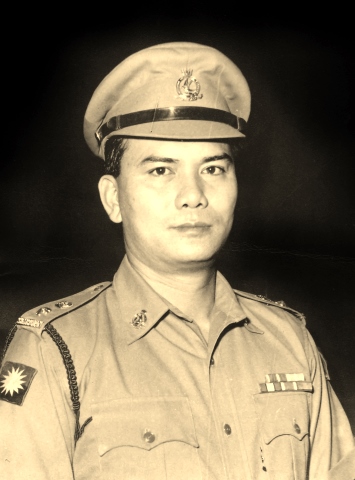
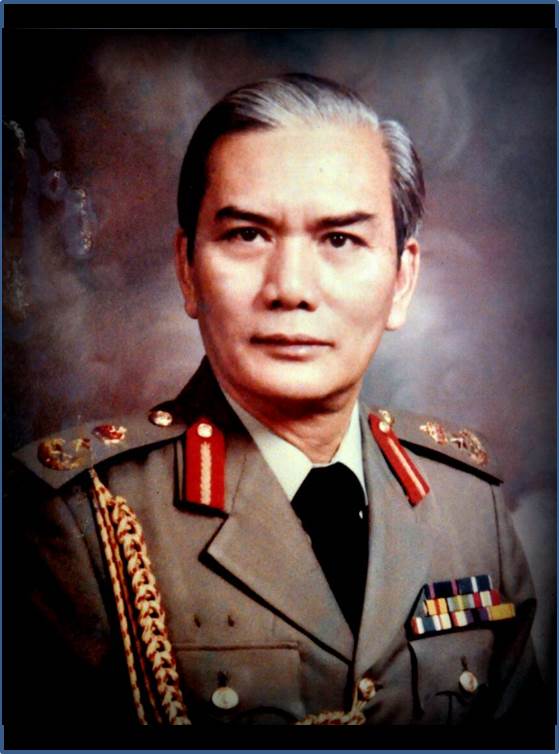
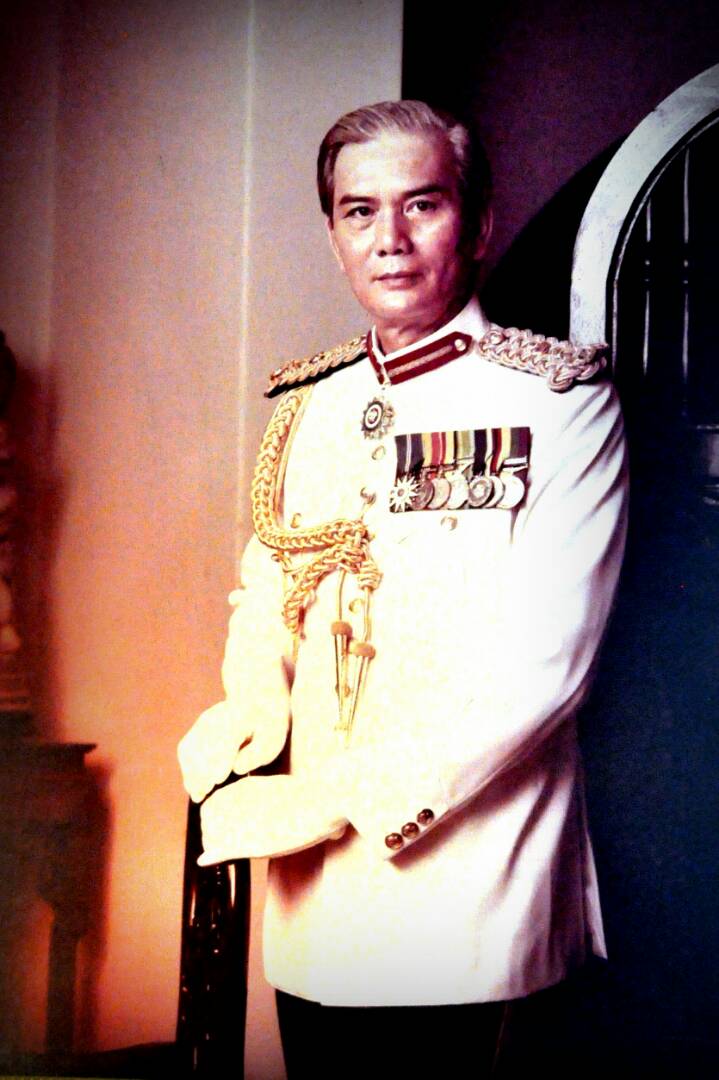
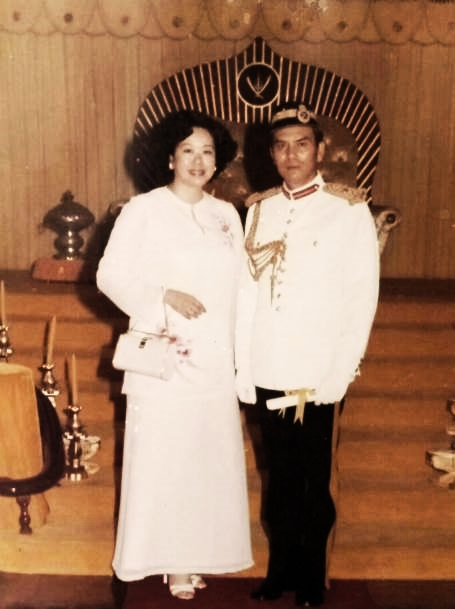
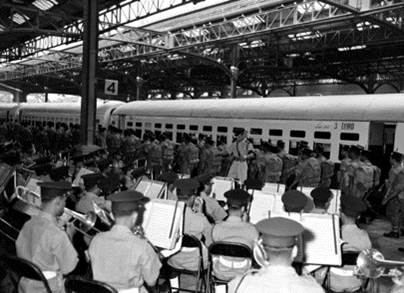
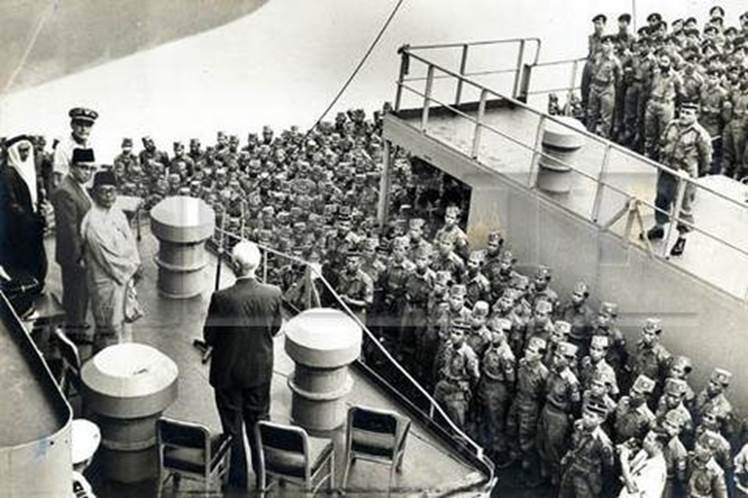
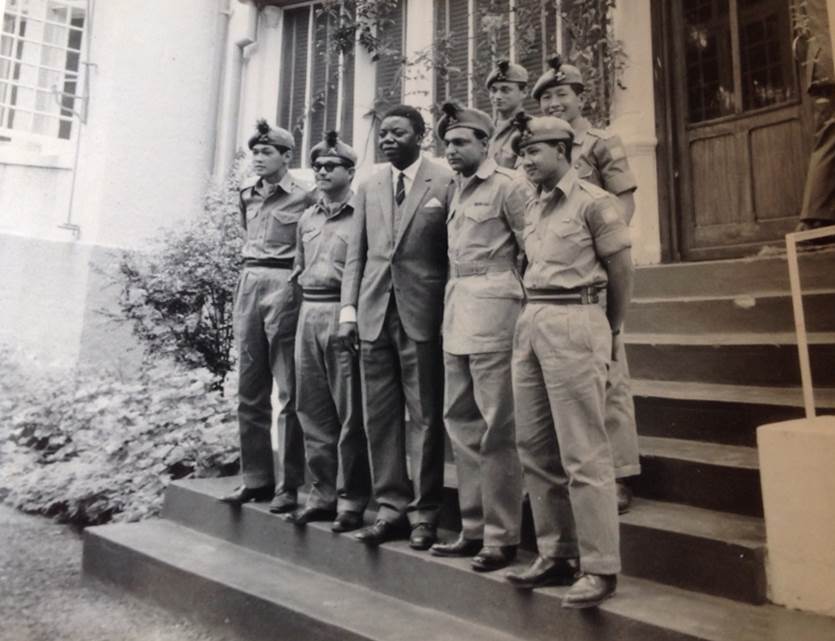
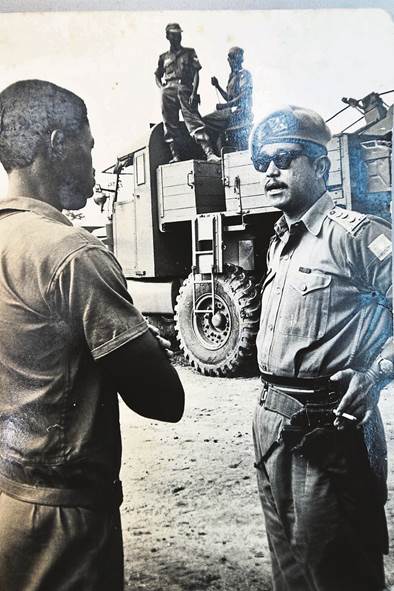

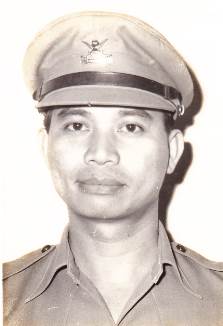

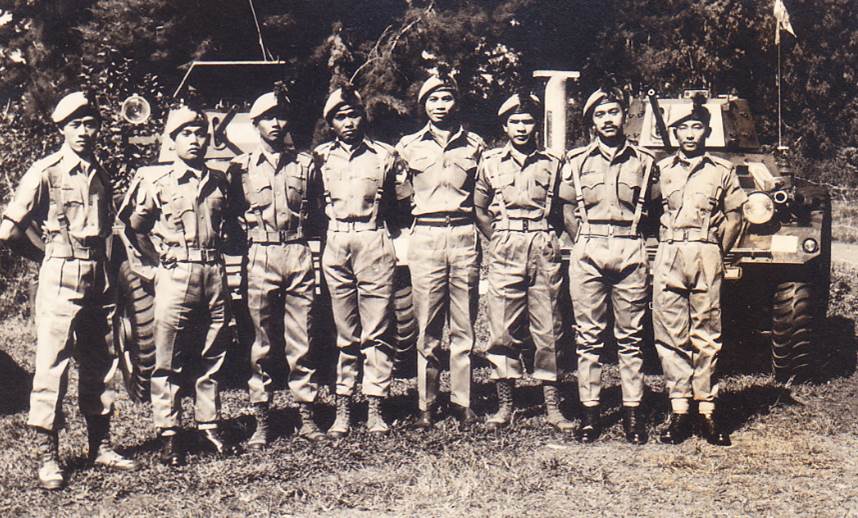
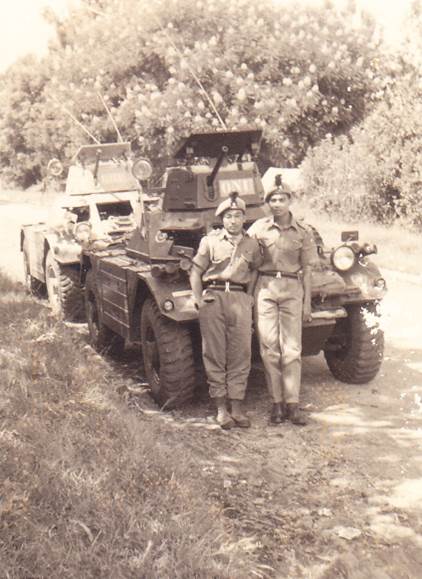
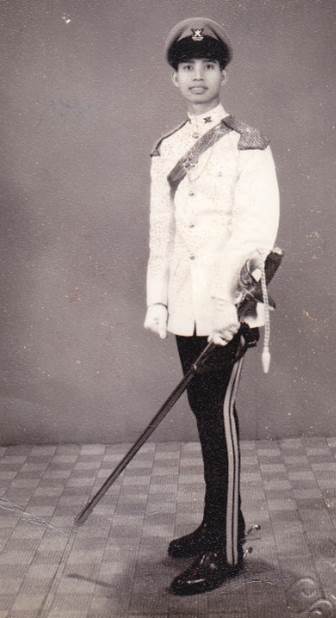
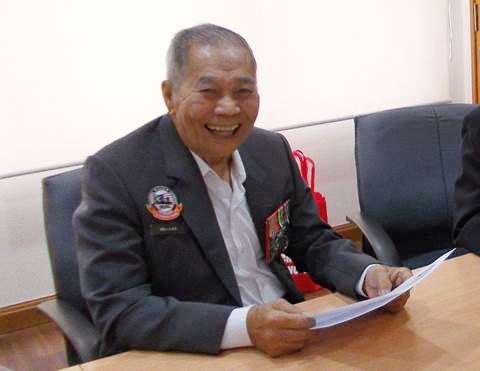
MENGENANG WIRA
Rear Admiral (Retired) Tan Sri Dato' Seri K. Thanabalasingam
Rear Admiral (Rtd) Tan Sri Dato' Seri K. Thanabalasingam is the third chief of the Royal Malaysian Navy and the first Malaysian to be appointed to the post. He was born on 12 March 1936.
Thanabalasingam joined the British Royal Malayan Navy, which was then under British control, in May 1955. He was sent to the Britannia Royal Naval College (BRNC) in Dartmouth, England, from which he graduated in early 1958.
He then decided to join the newly established Malayan Navy, which was fully Malayan owned and administered in late 1958. On his return to Malaya, he was appointed the first Naval Cadet Training Officer at the then Federation Military College at Port Dickson (currently the Royal Military College, Kuala Lumpur in Sungai Besi) from January 1, 1959.
By then, newly independent Malaya under Tunku Abdul Rahman's leadership had successfully negotiated with the British Government to transfer the British Royal Malayan Navy to the Malayan Government on July 1, 1958.
The British Royal Malayan Navy and all its assets (the ships, the bases and jetties and personnel) were merged with the existing Malayan Navy and from then on it became Malayan owned and administered. This new entity was named Royal Malayan Navy, and the designation “Royal” was a reference to the Yang di-Pertuan Agong.
After the trials and tribulations of the Indonesian Confrontation settled down, especially after the signing of the agreement between newly formed Malaysia and Indonesia in 1966, Tunku Abdul Rahman and his colleagues decided to Malaysianize the top posts in the navy and air force. They initially offered these posts to two senior Malaysian army generals, who declined for two main reasons. Firstly they felt that they were not professionally qualified and secondly because they did not want to jeopardise their own careers in the army.
Tunku and his cabinet then decided that they would select two officers, one from the navy and one from the air force, and appoint them chiefs of the respective services. They were fully aware of Thanabalasingam's age but decided, nevertheless, to appoint him and take the risk. This exercise created history not only because Malaysians for the first time were appointed to these two top posts but also because of his age—he was 31 years old and a bachelor.
Under Thanabalasingam and with Tunku Abdul Rahman's foresight, the Royal Malaysian Navy was gradually transformed from a coastal navy (brown water force) to an ocean-going navy (blue water navy).
At the end of 1976, he retired from the naval service as Rear Admiral at the age of 40. He ventured subsequently into private business. He currently lives in Kuala Lumpur.
www.wikipedia.org
Major General Dato' Leong Siew Meng (Retired)
DSNS PPT JSM AMN PJK
(28 Nov 1931 - 6 May 1986)
http://www.macva.org.my/lsmeng.html
In 1952, Malaya is 5 years away from being an independent
country. Malaya had its own standing army in the Malay Regiment which was
formed in 1933. Its first two battalions fought against the invading Japanese
Army in World War II and acquitted themselves very well against the enemy. The
Battle of Pasir Panjang in which Lt Adnan Saidi distinguished himself is well
documented.
Malaya was still in a state of war, this time against the
Communists Insurgents of the Communist Party of Malaya. Known as the Malayan
Emergency, it was fought from 1948 to 1960. The Malay Regiments had expanded to
3 battalions in 1948 and only Malays are being recruited to join the Army.
The clarion call for all citizens to take up arms against
the Communist Insurgents was made by General Sir Gerald Templer, the British
High Commissioner in Malaya. In July 1952, the Federation Regiment Bill was
passed in the Federal Legislative Council paving way for the development of the
first multiracial infantry unit.
With the formation of the Federation Army Brigade, the
Federation Brigade Signals Squadron was formed on 15 November 1952 which later
be known as Malaysian Royal Signals Regiment. 15th of November is celebrated by
Malaysian Royals Signals as its Corps Day.

LSM swth eleven of the twelve cadets chosen to become the first
officers of the Federation Regiment. The names tell the story. Left to right,
front row: Khong Kim Khong, Abdullah Samsuddin, Gerald Templer, Victor
Stevenson, Asna Mohamed Sutan; rear row; Gui Poh Chui; Thong Chee Sin; Leong
Siew Meng; Lakhbir Singh Gill, Ng Boon Hua, Lai Chung Wah, Amiruddin Mustapha
Al-Bakri. Source: Templer:Tiger of Malaya.
The call to other ethnic Malayans to join the Army
attracted many young men. General Sir Gerald Templer himself had a hand in the
selection of the first group of applicants, dubbed Templer's 12 or Templer’s
Superb Men. Among the Templer's 12 was a young man from Ipoh, named Leong Siew
Meng. He was born in Kajang on 28 November 1931 but was raised in Ipoh by his
tin miner father, Dato' Leong Ah Kow.
In early 1953, the Templer's 12 set off for cadet training
at Eaton Hall, England. They were to continue their training at the prestigious
Royal Military Academy Sandhurst, England and all were commissioned together as
Second Lieutenant (2Lt) on 3 February 1955.
2Lt Leong Siew Meng was posted into the young Federation
Signals Regiment, the first Malayan to be so honoured. Prior to this, the
officers were seconded from the British Royal Signals or those from the Signals
Platoons of the Malay Regiments. He later attended the Signals Young Officers'
Course at the British School of Signals, Catterick, United Kingdom.
He returned to Federation Malaya on 30 August 1955 and
served 1st Federation Division Signals Regiment as a Troop Commander. On 1
October 1955, he was Second in Command of 2nd Federation Infantry Brigade
Signals Squadron.
From June to December 1956, he was attached to the 2nd
Infantry Division Signals Regiment, Royal Signals of the British Army of the
Rhine (BOAR) in West Germany.
Signal Officer-in-Chief Visit on 3 March 1959. Captain
Leong Siew Meng is standing third from right.
Lieutenant General Dato’ Geoffrey Francis H. Brooke, GOC
Federation Army Farewell Visit on October 1959. Captain Leong Siew Meng is
seated second from left.
In 1957, Federation Signals Regiment consists of 1st and
2nd Federation Infantry Brigade Signal Squadron and Federation Army Signal
Squadron. A series of Regimental and staff appointments followed and in 1960,
the newly promoted Major Leong was selected to attend the prestigious Staff
College at Camberly, England.
When Indonesia declared its Confrontation against the newly
formed Malaysia in 1963, Major Leong with 2 Sergeants and 25 Signalers was
dispatched to Tawau to raise the East Brigade Signals Squadron which was
designated as 5 Brigade Signals Squadron later. They left Port Swettenham
onboard MV KUNAK to Singapore en route to Labuan. They arrived and put up at
Kima Road on 20 August 1963.
Communication from Labuan to Ministry of Defence in Kuala
Lumpur was established on 1700 hours 22 August 1963. Major Leong also acts as
Malaysian Armed Forces Borneo (MAFBOR) Communications Adviser. On 1 January
1964, 5 Brigade Signals Squadron was established at Sawmill Camp, Tawau with
him as it first Officer-in-Command.
On 2 November 1964, he was selected to attend the British
Joint Services Staff College (JSSC) at Latimar, England. On return in June
1965, he was appointed as Staff Officer Grade 1 (Staff) Army at OPSCO. In June
1966 he promoted as a Lieutenant Colonel and took command of West Malaysia
Signals Regiment, the first local officer to do so; the regiment later became 2
Division Signals Regiment.

On 1 August 1967, he was promoted as a Colonel and
subsequently took over the appointment as the Chief Signals Officer (CSO) on 21
August 1967 from Colonel David Sylvester-Bradley. He made history by being the first
local officer to become CSO. Colonel Leong was made a Brigadier General on 18
May 1969, right in the midst and chaos of the infamous May 13, 1969 incident.

As the first Malaysian CSO, he was expected to not only
maintain the high standard of achievement of the Corps, but also to improve on
its performance. He set about rationalizing the tactical requirement and
development of communications for the Army; he also streamlined the Tri-Service
communications requirement of the Malaysian Armed Forces (MAF). This was also
the time when the Corps was responsible for Tri-Service communications
requirements, especially in the areas of cryptography, communications security
and other electronic support measures.
He played a significant part in enhancing the role of MAF
in Frequency Assignment Committee for Singapore, Malaysia and Brunei (FASMAB),
the body that coordinated and controlled the allocation and usage of the radio
frequency spectrum in the region. To this day, MAF is still a member of that
Committee and continues to participate in the World Radio Conference (WRC), the
world body for the control and usage of the radio frequency spectrum.
In his time as the CSO, he initiated the project to revamp
the communication centre as well as the telephone facilities for the Ministry
of Defence. This resulted in the implementation of the first electronic
exchange in the country, with the direct-in-dialing facilities for the Ministry
that is still operational today.

As the youngest CSO in the Commonwealth, he was invited and
honoured to present a paper on the problems and techniques of High Frequency
(HF) Communications in the tropics. The paper touched on areas that affected
radio communications as it was known then. Among the subjects were the solar
flares, the atmospheric ionization, and the use of the various types of radio
antennae, amplitude modulation and the switching to a lower frequency for night
time operations. For many years his paper set the standard for such system in
the military sphere of the time.
Brigadier General Leong, as CSO, introduced many innovative
ideas to enhance the standard of professionalism in the Corps. To further the
cause of morale and esprit de corps, he set up the Signals Education Fund
(Tabung Yayasan Amanah Pelajaran Rejimen Semboyan DiRaja). This foundation
provides assistance to school-going children of personnel of the Corps, whether
still in service or retired.
He was also instrumental in encouraging the setting-up the
Veterans Association for the Corps which would serve to provide welfare
assistance to those in need and at the same time serves as a conduit for
continuing interaction with one another. He was at the helm of the Signals
Regiment for a period of 13 years until 21 May 1980.
On 26 June 1980, after handling over the CSO appointment to
Brigadier General Dato’ Idris bin Ahmad; he attended the US Army International
Fellowship Course at War College, United States. On return, he assumed the post
of Commandant of the Armed Forces Defence College and was promoted to Major
General on 1 June 1983.
He held the post until his retirement on 1 February 1986
after 33 years of dedicated service to King and Country. He married Madame
Choong Siok June on 26 May 1956 and has 2 daughters. They were divorced on 25
November 1969 and he married Miss May Lee. Sadly, he did not get to enjoy a
well-deserved retirement. Major General Dato' Leong Siew Meng SN:200008 died on
6 May 1986 as a result of a heart attack.

MACVA is very proud of his many achievements; notably being
the first Malaysian officer to be commissioned into the Royals Signals and the
first Chinese Chief Signal Officer of the Malaysian Royal Signals Regiment.
One of the Templer’s 12, he was a pioneer of the
multiracial Malaysian Armed Forces; a shining example that encourages many
others to join and served. May this tribute be a small token of appreciation
for the sacrifices that he had made for King and country.
WRITTEN BY: Lt Col Dato’ Martin Kam Yoon Sang (Rtd), Maj David Chow Yun
Kai (Rtd) and Maj Ng Koon Huat (Rtd).
Compiled by:
Maj Wong Kwai YInn (Rtd)
15 Nov 17
References:
A. Imbasan Rejimen Semboyan DiRaja 1952 – 1990. @Hakcipta
Jabatanarah Semboyan 1993.
B. Royal Malay Regiment
https://en.wikipedia.org/wiki/Royal_Malay_Regiment.
C. Malayan Emergency
https://en.wikipedia.org/wiki/Malayan_Emergency.
D. Federation Regiment
https://en.wikipedia.org/wiki/Federation_Regiment#Templer.27s_12_Superb_Men.
Major General Datuk Lai Chung Wah (Rtd)
(26 Nov 1932 - 17 Apr 2017)
http://www.macva.org.my/lcwah.html
Maj Gen Datuk Lai Chung Wah (Rtd) left us on the morning of
17 Apr 17 at Hospital Angkatan Tentera Tengku Mizan, Wangsa Maju, Kuala Lumpur.
He hailed from Kampar, Perak and joined the Army on 27 Jul 1952. Among the
Templer's 12, the first time ever when non Malay Potential Officers were
selected for the Army. Trained in Port Dickson, Eaton Hall and Royal
Military Academy Sandhurst, he graduated in 1955 and joined the 1st Bn
Federation Regiment. He also graduated from the Command & Staff College,
Quetta, Pakistan in 1963.
Promoted to Colonel in 1971 he was made the 1st Commandant
of PULADA, when the British handed over their Jungle Warfare Training Centre in
Kota Tinggi, Johore. He was also the 2nd Commandant of the Defence College,
Haigate with the rank of Brig Gen. Later whilst still at the College, he was
promoted to Maj Gen, personal to holder. He's only the second Chinese officer
ever to be granted that rank in his era. His final appointment before
retirement, also a first, was Inspector General of the Army Inspectorate Team.
He was awarded three Diplomas, one by the Armed Forces Defence
College for Defence Strategy and Joint Operations Studies, The National
Institute of Public Administration, Malaysia (INTAN) on Defence Resources
Management in 1981 and Defence Resources Management Education Centre,
Department of Defence, United States of America on Senior Defence Resources
Management in 1983.
He was appointed as the 5th Chairman of the Council and
Commander-in-Chief of St. John Ambulance of Malaysia from 24 Apr 1991 to 20 Oct
1991 where he introduced the white tucked-in shirt with black pants for male
members and officers.
He served the Malaysian Armed Forces in general and the
Army in particular for 35 years from 1952 to 1987 and retired with the rank of
Maj Gen. MACVA extends its deepest condolence to Datin Lilian Chong and family
in their time of grief.
War Hero - Colonel Maurice Lam Shye Choon (Rtd) PGB
http://www.macva.org.my/lsc.html.
Tribute to one of its hero's; Colonel Maurice Lam Shye
Choon (Rtd) PGB who belongs to a rare breed of soldiers that has display
extreme courage in the face of the enemy when called upon.
Col Maurice Lam (Rtd) PGB was born in 1928 and hailed from Jalan Kelawai, Penang. He had his early education at the Wellesley Primary School, Hutchings School and Penang Free School and his Secondary Education at Stephen’s College in Hong Kong.
His father, Lam Kin Sang, a lawyer sends him to Australia to further his studies in Dentistry at University of Melbourne. He returned home after 2 years determined to join the Malayan Armed Forces and serve his country in the best way he knew how.
In 1954, he attended Officer Cadet Training at the Pre-Officer Cadet Training Unit (Pre- OCTU) in Port Dickson and was one of the few Chinese selected to join Intake 3 of the Federation Military College (FMC). After 6 months in Pre-OCTU, he attended Officer Training at the Royal Military Academy Sandhurst from March 1955 to July 1956. Upon commissioned as 2nd Lieutenant, he was posted to the 2nd Federation Armored Car Regiment.
In 1957, he married his sweetheart Mdm Mary Low. 2nd Federation Armored Car Regiment was based in Kluang and commanded by Maj John Terry. It was later enlarged and renamed 2nd Reconnaissance Regiment with Lt Col Keit Robinson as its Commanding Officer. During the First Emergency, 2Lt Lam was frequently involved in patrol and escort duties throughout the country.
ONUC (Organisation des Nations Unies au Congo)
On 30 June 1960, Belgium Congo received their independence
admist political and administrative chaos. The situation quickly developed into
secession with different factions claiming sovereignty over parts of the
country. Congo appealed for military intervention from the United Nations
Secretary General. The United Nations deployed a multi-national force which
facilitated the withdrawal of Belgium troops but the power struggle and
hostilities between the different factions escalated beyond control resulting
in United Nations intervention.
In a request by United Nations Secretary General Dag
Hammarskjold, Malaya send a Special Force to serve in ONUC. On 24 August 1960,
Malayan Special Force (MSF) comprised of 613 men. The original force was drawn
from two of the finest units in the Federation Army, 4th Battalion Royal Malay
Regiment and C Squadron 2nd Reconnaissance Regiment. It had a complement of 42
officers and 571 other ranks.
On 4 October 1960, the MSF set sail from Port Swettenham
(Port Klang) for the 27 day journey to Port Matadi. Lt Col Ungku Nazaruddin,
Commanding Officer of 4th Royal Malay Reginent, was the MSF Commander.

Kuala Lumpur railroad station, a military band is on hand
for the departure of the Malayan Special Force to Port Swettenham, 4 October
1960. Source: UN News & Media Photo.
When several nations withdrew, the UN appealed to nations
with less volatile leadership to fill the void. Malaya committed another 800
troops, totaling 1,413 men. The bulk of this reinforcement departed on April 7,
1961. The Commander was Brig Gen Abdul Hamid bin Bidin and Col Maurice Lam
(Rtd) PGB, a Captain then with A Squadron 2nd Reconnaissance Regiment (A Sqn 2
Recce) was part of this Malayan Special Force Brigade.

Malayan Special Force leaving for the Congo, 1st July 1961.
The Prime Minister Tunku Abdul Rahman and his deputy Tun Abdul Razak bin
Hussein on board the U.S.S Blatchford just after adressing the Malayan soldiers
who were leaving Port Swettenham to relieve the first MSF in the Congo.
Source:7th Rangers–Incidcent in Kindu.
Peacekeeping In Congo
A Sqn 2 Recce was commanded by Maj Lakhbir Sing Gill with
Captain (Capt) Maurice Lam as the Second in Command (2IC). The Regiment was
commanded by Lt Col Roger Nixon, as part of the MSF. They were tasked as
peacekeepers from April 1961 to January 1962. The Squadron was stationed in
Goma, Kivu Province, Congo and was initially deployed to Bukavu, after which it
was flown to Leopoldville and then to Stanleyville.

A Sqn 2 Recce Officers at Elisabethville, Katanga. Front L
to R: 2Lt Abdul Rahman Dato Hussien, Capt Maurice Lam, President Moise Tshombe,
Maj Lakbir Singh and 2Lt Sam Low Tung Yeow. Back L to R: 2Lt N.H.Siebel and 2Lt
Michael Chong Boon Tick. Photo courtesy of Lt Col Tan Siew Soo (Rtd).
After Bukavu, Second Lieutenant (2Lt) N.H. Siebel, a Troop
Leader was detached from A Squadron and placed under command of B Company 6th
Royal Malay Regiment which was at Kindu, Maniema District since July 1961. He
had with him 4 Ferret Scout cars which were manned by 7 men. They were to
assist the Company in guarding Kindu airport from being overrun by the rebels.
The OC of B Company acquired an isolated bungalow a kilometer away from the
airport and converts it to an Officers Mess.

Captain Maurice Lam in Stanleyville, Democratic Republic of
Congo. Behind him is a Scammel recovery truck. Source: Old soldiers never die,
24 Feb 2016. Malay Mail Online .
Incident in Kindu
The Commander of MSF, Brig Gen Abdul Hamid bin Bidin
decided to further reinforce Kindu Airport where A Squadron was deployed from
Leopoldville and was commanded by then 2IC Capt Maurice Lam. The troops and
equipment were flown in by 2 UN aircrafts. The two C-119s, twin-engined
transport aircraft were based at Pisa Airfield, Italy and manned by 13 airmen
from the Italian Air Force. Both aircraft landed at the Kindu Airport on noon
of the 12 November 1961.
While the Malayans and Italians were having lunch break at
the Officer Mess, about 40 Congolese rebels attacked and besieged the Officers
Mess and Kindu Airport. They killed 1 Italian airman and captured the rest,
mistaking them for Belgians. Capt Maurice Lam showed tactical prowess and
courage by deploying two armoured cars to recapture the Officers Mess. Bold
action from him successful rescued personnel, equipment and weaponry of the
Malaya Special Forces. 14 Ferret Scout cars belonging to A Squadron, and the
two Italian aircraft were prevented from falling into the hands of the
Congolese rebel army.
It was learned later the airmen were dismembered, and sold
as meat in the market. In February 1962, an Austrian Red Cross convoy, escorted
by a contingent of Ethiopian peacekeepers and accompanied by two officers of
the 46th Brigata Aerea, uncovered the mass grave where they were buried. It was
in the cemetery at Tokolote, a small village on the banks of the Lualaba River.
The bodies, protected by a thick crust of clay were still identifiable. The
remains of all 13 airmen were transported to the airport of Kindu by an Italian
C-119 and subsequently returned to Italy on board a United States C-130
Hercules transport aircraft.
Both Capt Maurice Lam and 2Lt N.H.Siebel were conferred the
‘Pingat Gagah Berani’ for valour by the 3rd Yang DiPertuan Agong, Almarhum
Tuanku Syed Harun Putra ibni Almarhum Syed Hassan Jamalullail at the Tunku
Abdul Rahman Hall in Ampang, Kulau Lumpur on 5 June 1963.
He took up the post of Second in Command of the 4th
Battalion Malaysian Rangers after serving the Reconnaissance Regiment for 15
years. He subsequently attended a Psychological Operations course in United
States and Army Staff College. He did ‘Psyops’ duties in MINDEF and in the
Prime Minister’s Department.
Lt Col Maurice Lam Shye Choon (Rtd) PGB was Commanding
Officer of 7th Battalion Royal Rangers (Mechanized) from 19th May 1977 to 15th
September 1979. He took over command whilst the battalion was still on
operations in Kanowit, Sibu, Sarawak.
Col Maurice Lam Shye Choon (Rtd) PGB SN:200051 retired
while attached to MINDEF in the early 90s. He had served the country for 33
years with pride and dedication. He had passion for the Military and he enjoyed
every moment of his 33 year career. He also said that if he was born again, he
would take the same line in his life, without any regrets. He passed away on 13
February 2016 leaving behind his wife, Mdm Mary Low and 3 daughters.
A nation war hero, the members of the Malaysian Armed Forces are very proud of his achievements
and may this tribute be a small token of appreciation for the sacrifices that
he had made for King and country.
Mej Jen Dato' Selvarajah
By Tan Ju Eng
Mej Jen (Rtd) Datuk N. Selvarajah finds loads of humour in
his illustrious career in the army. At the age of 78 and still walking tall,
Selvarajah has warm memories of our first Prime Minister Tunku Abdul Rahman.
“I shouldn’t be telling you this,” he whispered, “but I
will tell you anyway how Tunku scolded me when I didn’t know what a rose bowl
was!”
It was 1957, and the young lieutenant Selvarajah, who had
just returned from the Royal Military Academy Sandhurst the year before, was
attached to the engineering corp. He was selected because the Tunku wanted an
all-Malayan ceremonial committee to prepare for the Independence Day
celebrations.
“I was 26 then and Tunku wanted me to build a rose bowl in
the middle of the lake at Lake Gardens. When I did not know what he was talking
about he said: 'I sent you to England for five years and you do not know what a
rose bowl is!’”

Mej Jen (Rtd) Datuk N. Selvarajah with a replica of the
bridge that he built while he was serving in the army.
The embarrassed young lieutenant redeemed himself by
creating a floating stage; he tied up planktons and anchored the floating stage
in the middle of the lake.
The Tunku was very pleased with the young man's
improvisation.
Selvarajah joined the army in 1952 when he was selected as
one of British High Commissioner Sir Gerard Templer’s 12 men to start the
multi-racial Federation Regiment which was set up to fight communist terrorists
after World War II.
“I was serving in the Singapore police force when I saw a
recruitment advertisement to form the regiment. When I was accepted, the police
force did not release me until Templer intervened. I was soon on my way to join
the other 11 in Port Dickson for training.”
According to Selvarajah, the exercise to form the
multi-racial unit was one of the criteria for achieving independence. The press
had tagged the 12 who toured the country recruiting men for the regiment as
Templer's 12 Superb Men.
“The term was coined by the press. We were not the only men
recruited but we were the first 12. It was a PR exercise that lasted a couple
of months. By the time we left for Eaton Hall in England, there were 48 of us.”
After four months at Eaton Hall, 24 of them went to
Sandhurst and the rest returned to Malaya to serve in the army.
“At Sandhurst we were selected to go into various units
such as engineering,” said Selvarajah who insisted, tongue-in-cheek, that they
were arm-twisted into joining that unit.
Selvarajah did not think much about the esprit de corps
among the 12 Superb Men but felt it was strong among the 24 officers who spent
18 months together in Sandhurst.
During his training in England, Selvarajah met Templer two
to three times, and the latter made a lasting impression on the young man.
“He was quite a task master who could not care what other
civil servants said. He was brilliant, and was the right chap at the right
time. His style may not appeal to many but we were used to it,” said
Selvarajah.
“Templer had a dynamic personality. Once he made a
decision, he would send out a telegram, go to the village and replace anyone
who was not doing the right thing. He was also known to be rude and broke red
tape,” recalled Selvarajah.
Selvarajah said he learnt many lessons from working under
Templer and the Tunku.
“Tunku was a man who made snap decisions. For the Merdeka
parade in 1957, he wanted to extend the seats way past the Federal House. So
more panels were installed for the chairs. But many people were fighting over
the protocol related to the seating arrangements. So Tunku ordered all the
panels to be dismantled within 24 hours because the parade would be held the
following day.
“But months later when we were watching football at the
Merdeka Stadium, Tunku pointed out several people to me and said: 'Football
they can sit anywhere but parade they want protocol',” laughed Selvarajah.
Selvarajah has built a website to chronicle his
experiences. To read more about his exploits, go to www.geocities.com/grandpa07my
A War Hero - Major Lee Ah Pow (Rtd) PGB
http://www.macva.org.my/lap.html
Unsung and retired warriors who contributed to nation
building often ride into the sunset with the younger generation in Malaysia not
even aware of what they have done let alone who they were. History is such that
often those mentioned are heads of states while others who have contributed in
their own way are invariable left out and often forgotten. Without the
sacrifices of those who fought in the 1st Malayan Emergency (1948 – 1960), the
Confrontation (1963 – 1966) and the various military operations to rid the
country of threat from the communist terrorist. Malaysia could well be another
chaotic country immersed in military conflicts as evident with many other
countries around the world today.

The current generation of citizens in Malaysia enjoys
modern infrastructure with foreign and local investments in all forms, colours
and sizes. People mingle around attending to their needs spared and sheltered
from the constant armed threat of the communist terrorist. All the development,
foreign direct investments, luxuries of modern life today is only possible
because of the sacrifices in the early days and by those who have contributed.
This article represents an attempt to capture some of the
stories and exploits of those who dedicated their lives to nation building and
made life as we know it today possible. One such individual is none other than
Maj Lee Ah Pow (Rtd) PGB of the Royal Malaysian Armour Corps or Kor Armor
DiRaja as it is known today.
Major (Maj) Lee Ah Pow (Rtd) PGB was born on October 9,
1937 in the small settlement of Rompin in Negeri Sembilan (a south western
state in Peninsula Malaysia). He was the second child but oldest boy among six
siblings. His father Lee Seng was a general contractor who was aligned to the
British while his mother Mesah binti Ahmad hails from Sulawesi, Indonesia. Maj
Lee (Rtd) PGB received the calling to join the army after witnessing atrocities
when the Japanese captured Malaya from the British during WWII.
His own his father was captured and tortured by the
Japanese after being renegaded by an uncle (his father’s cousin) who reported
his father as a communist agent. His father was hung up and tortured for four
days and night at the Seremban Police Station before they brought his father’s
lifeless body back to Rompin. Recounting the painful memories of those yester
years when life was shrouded with uncertainties he described how as the eldest
son but only as a young boy he had to recover his father’s body from the
Seremban Police Station. On the way home, the train broke down and he had to
part carry, part drag and part stretcher his father’s lifeless body all the way
home. Miraculously his father survived the ordeal despite being hung up, beaten
for days on end and being dragged home.
Early Education
Maj Lee (Rtd) PGB received his primary education at the
Chung Hwa Primary School in Bahau before being transferred to the Seremban
Anglo Chinese School. His father had objected to him having anything to do with
any military be it with the government those days or with the communist
terrorist. When his father became aware that he was joining the Federation
Military College, he was told to leave the house and was effectively disowned.
Torn between his father’s wishes and his calling to be in the position to
influence to do the right thing he continued with the military.
The contributing factors that led to him sticking to his
decision to remain at the FMC was largely due to him being exposed to Japanese
military atrocities first hand during WWII and at time it was also the 1st
Malayan Emergency. It was two years later during the Chinese New Year in 1955
that he decided to return home to visit his family. Upon reaching home and not
knowing what to expect he knocked on the door. His father opened the door and
stood watching him. After what seemed like ages, he asked if he could enter and
his father relented and they made up.

Cadet Officer Lee Ah Pow.
Life at the Federation Military College or FMC as it was
proudly known in the 1950s was full of new experiences such as firearms
training and basic military tactics compared to the Anglo Chinese School. Lee
Ah Pow moved on from being a “Budak Boy” to Officer Candidate after passing his
Fifth Form Cambridge “O Levels” examinations. Cadet Officer Lee recalled being
actively involved in sports including boxing and basketball. He enjoyed the
adventurous life but considered himself an average cadet. Upon completion of
his training, the obvious choice was to be commissioned into the Federation
Armoured Car Regiment (FACR). He recounted that the choices those days were
merely, the FACR, Signals, Artillery and Transport.
Maj Lee’s (Rtd) PGB wishes came true when he was
commissioned into the Federation Armoured Car Regiment in 1957. His exploits as
a young officer with the FACR were colourful and full of adventure including a
stint as peacekeeping troops under the Organization Nations Unes au Congo. He
was deployed in Tawau, Semporna and Lundu in Sabah during the Confrontation and
saw numerous military operations along the Malaysian-Thai border throughout his
military career. It was in Congo that he was presented a gallantry award.
Organization Nation Unes au Congo
Post WWII, nationalism swept across Belgium Congo as with
most other parts of the world. Serious riots broke out across Congo before the
Belgians granted them independence on June 30, 1960. Mutinies and unrest was
the order of the day with different factions claiming sovereignty over parts of
Congo. Belgium despatched troops on July 10 to protect its citizens and its
interests. Congo, now an independent state regarded the Belgian action as
external aggression and a violation of a peace and friendship treaty signed
between Belgium and Congo. Congo appealed for military intervention from the
United Nations Secretary General. The United Nations deployed a multi-national
force which facilitated the withdrawal of Belgium troops. The power struggle
and hostilities between the different factions in Congo escalated beyond
control resulting in another United Nations intervention.
In August 1960, Malaya responded to a call by the Secretary
General of the United Nations, Dag Hammarskjold to contribute troops and
equipment towards the United Nations Force in Congo. The Malayan Special Force
(MSF) which comprised primarily of an Infantry Battalion and a Reconnaissance
Squadron was dispatched together with other supporting units.

Lt Lee AP with his troop in Congo.
It was in 1962 when C Squadron, 2nd Reconnaissance Regiment
was to be deployed on another tour of Congo when Maj Lee (Rtd) PGB, a
Lieutenant at that time was selected to undergo a Regimental Signals Officers
(RSOs) course in the United Kingdom. It was therefore intended that he remained
as part of the Regimental rear party. Lt Lee turned down the course and opted
for deployment to Congo despite being advised that he would lose the
opportunity for promotion to Captain.
During this tour the MSF was operating under the command of
the Indian Independent Brigade Group which was led by Brigadier R. S. Noronha.
The Malayan contingent comprised C Squadron of the 2nd Reconnaissance Regiment
and the 2nd Battalion Royal Malay Regiment. C Squadron, 2nd Reconnaissance
Regiment operating in Elizabethville in Congo was organized as follows:
(1) Squadron Leader: Maj Asna bin Mohamed Sutan.
(2) Squadron Second-in-Command: Capt J. C. Rodrigues.
(3) No. 1 Troop Leader: Lt Tan Siew Soo.
(4) No. 2 Troop Leader: Lt Tee Bua Bian.
(5) No 3 Troop Leader: Lt Lee Ah Pow.
(6) Rifle Troop Leader: 2nd Lt Raja Hj Ahmad.

Lt Lee Ah Pow posing with the Ferret Scout Cars
with UNO painted on the turret.
Tensions were high when C Squadron returned to Congo in
June 1962. The main task of C Squadron was to patrol the numerous tracks on the
outer perimeter of the Elizabethville airport. On September 12, 1962 Lt Lee Ah
Pow was on one of these patrols together with a reconnaissance section from the
2nd/5th Gurkha Battalion when they encountered a Katangese road block led by a
Caucasian mercenary. No. 3 Troop comprised four Ferret Scout Cars while the
Gurkhas were mounted on two Land Rovers and was commanded by Maj Gupta. The
Land Rovers were sandwiched between the Ferret Scout Cars with Lt Lee in the
lead Scout Car. The terrain was flat but tall grass and scrubs provided good
cover.
On their return leg, the patrol entered a track which led
to an intersection known as the Martini Junction. Lt Lee in the lead scout car
spotted about 30 – 40 Katangese soldiers who tried to stop them. The Katangese
were shouting and jeering with a lot of hand gestures. Before long Lt Lee
realized that they were surrounded. He heard Maj Gupta shouting, “Lieutenant do
something! Do something!” The Gurkhas meanwhile had dismounted and occupied
prone positions in all round defence. Lt Lee dismounted and ordered the
Katangese to withdraw. A Katangese soldier in return shouted “Malaya apano
bolozi!” or Malaysia no good! When the Katangese refused to withdraw Lt Lee
felt something amiss and headed back to his vehicle. As he was about to mount
onto his Ferret Scout Car a shot rang out barely grazing his left ear. He
jumped into his Ferret Scout Car and ordered his men to return fire.
As soon as the Ferret Scout Cars opened fire and jockeyed
into firing positions more Katangese soldiers emerged from the tall grass and
started running away. Lt Lee told his soldier to cease fire as their mission
was peacekeeping and the Katangese had their backs to No. 3 troops and were
running away. In the brief exchange of fire the Katangese retreated leaving
behind two dead. A search of the area revealed that the patrol had accidentally
entered into a Katangese defensive position. A large cached of firearms and
ammunition including machine guns and rocket launchers abandoned by the fleeing
Katangese were recovered.
Recounting the incident Maj Lee (Rtd) PGB related that as
the fire fight was on going he was at the same time worried as the exteriors of
the Ferret Scout Cars were mounted with jerry cans of gasoline which could
easily catch fire should a grenade be hurled at them. He told his soldiers that
if they die, they would take some of the Katangese along with them. Lt Lee was
decorated with the gallantry Pingat Gagah Berani for the way he handled the
situation and for saving the day. Two months after his encounter with the enemy
Maj Lee (Rtd) PGB received news of the passing away of his father.

Second Lieutenant Lee Ah Pow as a young officer with 2
Recce complete with cross belt, chain mail, sabre and spurs.
In 1971 Maj Lee (Rtd) PGB switched from the Royal
Reconnaissance Corps to the Military Police. While in the Military Police his
notable achievements include cracking a scandal where Kangaroo meat was
supplied to soldiers instead of beef and resolving a stand-off between soldiers
and youth connected to triads in Kuching. He retired from military service
after 20 dedicated years.

PEOPLE of Malaysia is very proud of Maj Lee Ah Pow (Rtd) PGB
achievements and sacrifices for King and country.
Maj Lee Ah Pow (Rtd) PGB with his wife Alice Tan living in Sikamat, Seremban.
WRITTEN BY: Capt Lim Cheng Huat (Rtd)
8 Sep 17
References:
A. Renjer Valour - Firefight in Elizabethville
http://renjervalour.blogspot.my/2006/03/firefight-in-elizabethville-congo-lt.html

